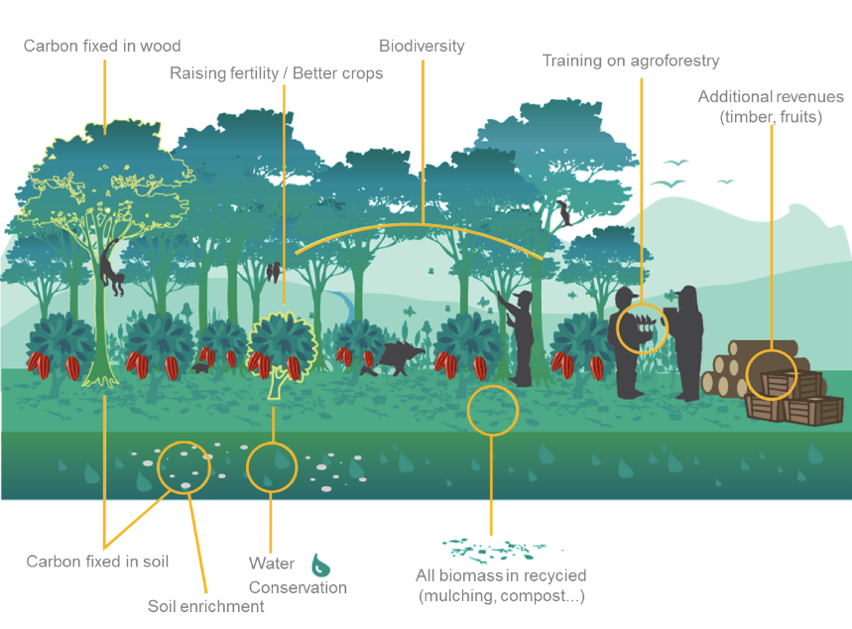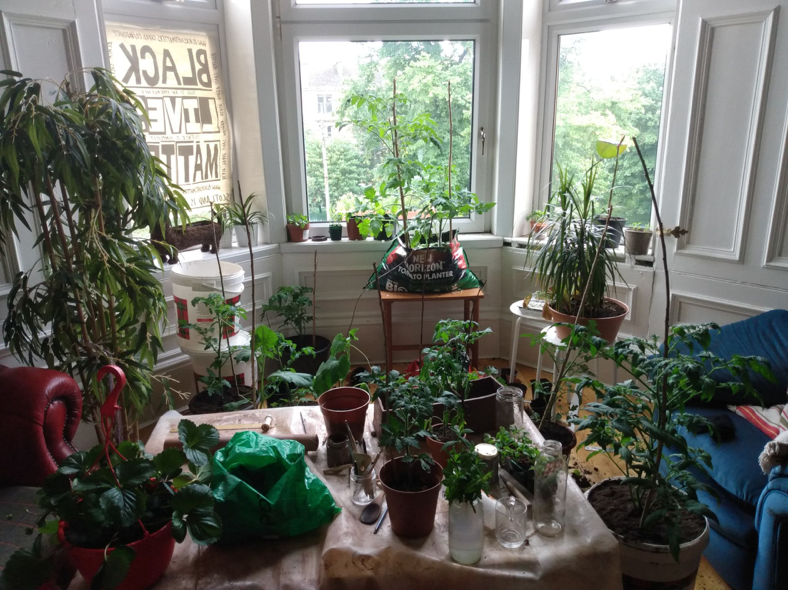The Global Landscapes Forum (GLF) Biodiversity Digital Conference brought focus to the current biodiversity crisis facing the world and what solutions are being imposed around the globe. Sessions were presented by various stakeholders – from indigenous peoples to government ministers – covering a wide range of perspectives and experiences. COVID-19 was a prevalent theme throughout the conference, with many speakers highlighting that this pandemic arises from a biodiversity crisis in itself. It is evident that food systems and food security are interlinked with biodiversity, and of particular interest to me was the session titled ‘The role of diverse agricultural landscapes in biodiversity conservation and food system resilience’. This session explored the connections between biodiversity and agriculture, centering on how biodiverse food systems can strive towards increased food security in a post-COVID-19 future. Compared to other sessions in the conference, this session gave more focus to accounts and experiences from a range of stakeholders around the world, as explained below. The session stressed that a biodiversity crisis is evident in both the Global North and Global South; and agriculture is part of the solution in both cases if context specific approaches are used.
German farmer Peter Zens strives and advocates for seasonal, local and sustainable food systems with a focus on integrating people into the farming experience. In Europe, the majority of farms adopt a monoculture system, growing one singular crop for trade across Europe or beyond. Peter stresses that crop diversity is needed in order to replenish the soil with nutrients and increase local biodiversity. By using diverse farming methods, farms also have an increased resilience to shocks – which is essential for food security. Peter promotes community involvement in his farm, and stresses that people experience joy and curiosity when visiting, allowing a better understanding of where food comes from. With this knowledge, people gain more respect and appreciation for food, inevitably wasting less and improving their nutritional intake. This is an important point from Peter, as it is easy to ignore the food systems behind our choices in the Global North.
Thomas Jacob, an agricultural advisor at the Peermade Development Society of Organic Spices, began by highlighting the need for different solutions in the Global South, where most farmers are smallholders. Thomas advises smallholder farmers in India on ways to introduce multi-cropping systems to maximize land use. Using these farming methods, food security is supported in the local area and extra income is available for farmers through international trade of spices. Thomas stresses that farmers hold a wealth of knowledge and have valuable inputs to make to the wider agricultural community. Staying with India, Alka Bhargava, Additional Secretary for the Ministry of Agricultural Cooperation and Farmer’s Welfare for the Government of India, gave a detailed talk about how India’s agricultural system has responded to COVID-19 and how they plan to reform the system post-COVID-19. Alka highlighted that India strives for a sustainable and biodiverse food system while addressing food security for the vast population. When rebuilding from the pandemic, India plans to focus on better post-harvest management and improved agricultural infrastructure to minimize food waste. To enable a worldwide transition, more countries should follow India in actively striving towards more biodiverse and sustainable food systems.
A key question during the session was how biodiverse farming systems can attract funding and what direction this may come from. Lorena Friers, Regional Asia Manager for PUR Project, aims to make supply chains more sustainable by forming connections with agricultural communities to safeguard and restore natural landscapes. Lorena noted that most projects involve agroforestry, however PUR Project are strong advocates for empowerment of local people and therefore unique solutions based on the environment and indigenous knowledge are sought for every community. Figure 1 shows a schematic diagram obtained from the PUR Project website, which explains the benefits agroforestry systems can provide to local ecosystems. PUR Project is funded by companies in the commercial sector aiming to make their supply chains more sustainable, and has worked with numerous different sectors in agriculture, from coffee to the cosmetic industries.

Tobias Ludes is a Programme Manager at the Global Nature Fund, an NGO working with food companies to improve biodiversity within company standards and procurement. Due to the nature of online conferences, Tobias experienced some connection issues; however, what I understood was that the ‘Biodiversity Action Plan’ has been established through Global Nature Fund. This is a management plan for farms to implement biodiverse practices, and Tobias explained that this plan has been used worldwide in a variety of contexts, highlighting its scalability.
In the midst of a lockdown and uncertainty about the future, this conference was an inspirational and motivating two days, confirming for myself that MScCCAFS is an important master’s program to be undertaking. This particular session gave the important message that a biodiversity crisis is reaching critical levels globally, however different agricultural solutions are needed in different contexts and regions worldwide. Indigenous knowledge in particular is an invaluable part of the solution. Applying this session to my own context, the UK crucially needs an agricultural system similar to the one Peter Zens laid out, however it is clear that the future of agriculture and food security in the UK is bleak due to the loom of Brexit and questionable government handling. In my local community in Glasgow, COVID-19 lockdowns initiated a surge of interest in the origins of food, and highlighted the challenges associated with food security. Many people who are lucky enough to have gardens and the resources started growing food themselves, reflected in the difficulty to buy seeds and soil. Without access to a garden, my flat-mate Louise showed that even in a tenement flat, some self-sufficiency is possible (Figure 2). These local and global examples show that positive transformations and attitude shifts are happening across all levels and regions, and with greater awareness these changes will continue into the future.

References
Bhargava, A. ‘The role of diverse agricultural landscapes in biodiversity conservation and food system resilience’, 29/10/20, Bonn, Germany
Friers, L. ‘The role of diverse agricultural landscapes in biodiversity conservation and food system resilience’, 29/10/20, Bonn, Germany
Jacob, T. ‘The role of diverse agricultural landscapes in biodiversity conservation and food system resilience’, 29/10/20, Bonn, Germany
Ludes, T. ‘The role of diverse agricultural landscapes in biodiversity conservation and food system resilience’, 29/10/20, Bonn, Germany
Zens, P. 2020 ‘The role of diverse agricultural landscapes in biodiversity conservation and food system resilience’, 29/10/20, Bonn, Germany
Figure 1: PUR Project. Agroforestry and Reforestation. https://www.purprojet.com/agroforestry-and-reforestation/ Accessed 04/11/20